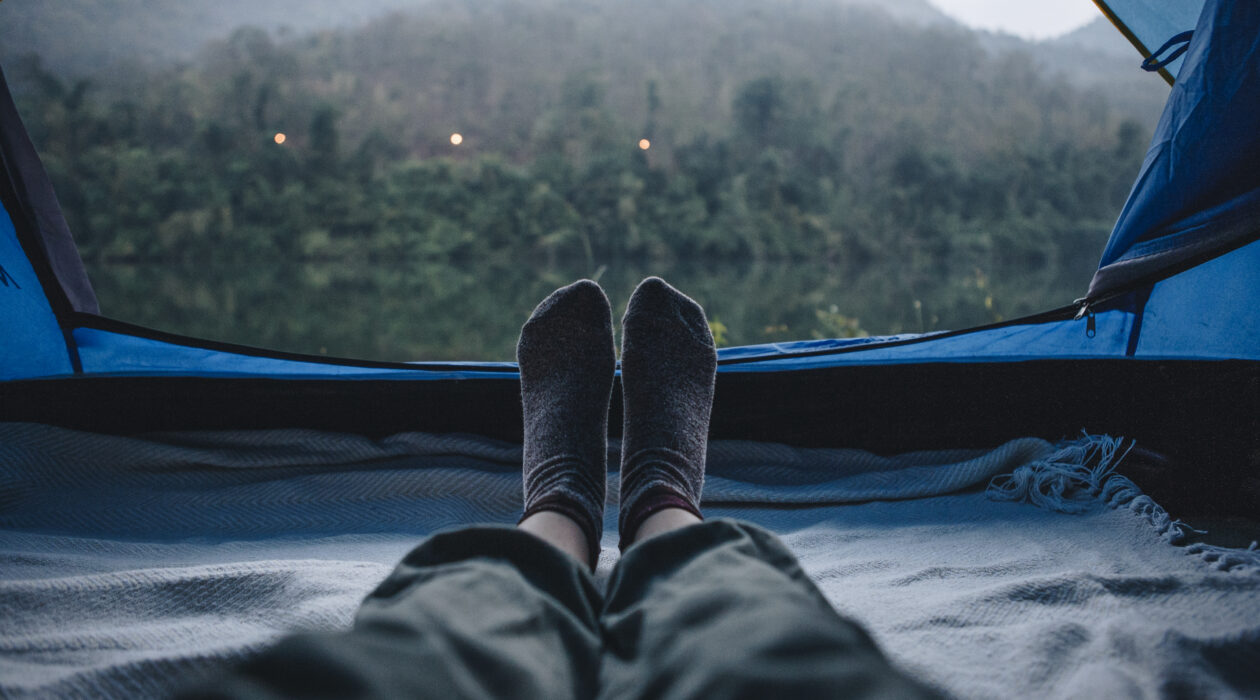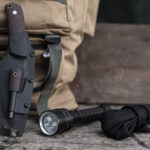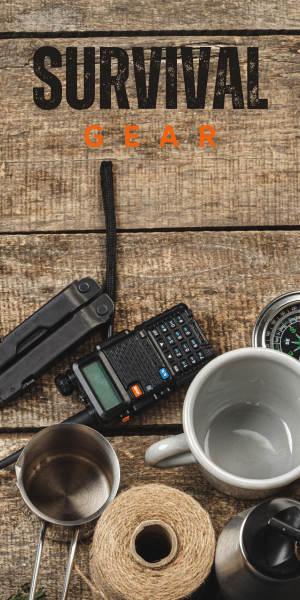Stealth camping, a practice often embraced by survivalists and preppers, is more than just a way to reconnect with nature; it’s a skillful art of blending into the environment. Imagine a lone camper nestled in a scarcely detectable shelter amidst dense woods under the cloak of night. Their presence is as subtle as the whispering wind, undetected by the untrained eye.
This is the essence of stealth camping, a technique that provides both an exhilarating challenge and a practical approach to outdoor survival. This post aims to guide those intrigued by survival and preparedness in mastering the art of stealth camping, turning them into invisible dwellers of the wild, adept in leaving no trace behind. This skill, invaluable in survival situations, offers a unique way to experience the wilderness while staying low-key and safe.
What is Stealth Camping?
Stealth camping, also known as wild, free, or rough camping, sleeps outside in a self-chosen spot rather than an officially designated campsite. This form of camping is characterized by its inconspicuous nature, aiming to leave no trace and remain undetected. It’s a way of camping outside established campgrounds, often in areas where it’s explicitly or implicitly forbidden.
Legal Aspects of Stealth Camping :
The legality of stealth camping varies by region. In the United States, it often involves van camping in public areas where overnight camping is typically prohibited. This practice is growing due to restrictions in many cities against tent sleeping aimed at reducing homelessness. Stealth campers in the US often park their vans discreetly, using blackout curtains or windowless vans to avoid detection.
In the UK, stealth camping has evolved to focus more on survival skills and is often practiced in response to increasing restrictions on wild camping. Wild camping in the UK is now limited to Scotland, and camping outside designated sites in England and Wales without landowner permission is technically illegal. Stealth campers in the UK often use camouflaged tents or hammocks or even build shelters from natural materials to avoid detection.
In mainland Europe, living in a van is not illegal as long as the vehicle is roadworthy and legal to drive. Stealth camping in Europe involves parking a camper van or motorhome in areas without paying for a spot, often in rural or forest areas. The practice is about blending in and moving from place to place without staying too long in one spot.
Benefits for Survivalists
For survivalists and preppers, stealth camping is an essential skill. It teaches how to live off the grid and be self-sufficient, skills crucial for survival in various scenarios. Stealth camping enhances one’s ability to adapt to different environments, use natural resources wisely, and leave no trace. It also develops navigation and backcountry safety skills, vital for survivalists. Stealth camping not only offers a way to connect with nature but also prepares individuals for situations where they might need to rely on their skills to survive in the wilderness or scenarios where traditional camping options are unavailable.
Preparing for Stealth Camping
Preparing for stealth camping involves careful planning and the right equipment to ensure a safe and low-impact experience. Here’s a guide based on insights from various sources:
Essential Gear Stealth Comping
The essential gear for stealth camping includes:
Lightweight Tent or Hammock:
For non-urban stealth camping, a low-impact shelter like a hammock or a tent in muted colors helps to remain undetected. Our Selection will be The Coleman Dark Room Sundome Camping Tent is a unique outdoor shelter designed for comfort and convenience.
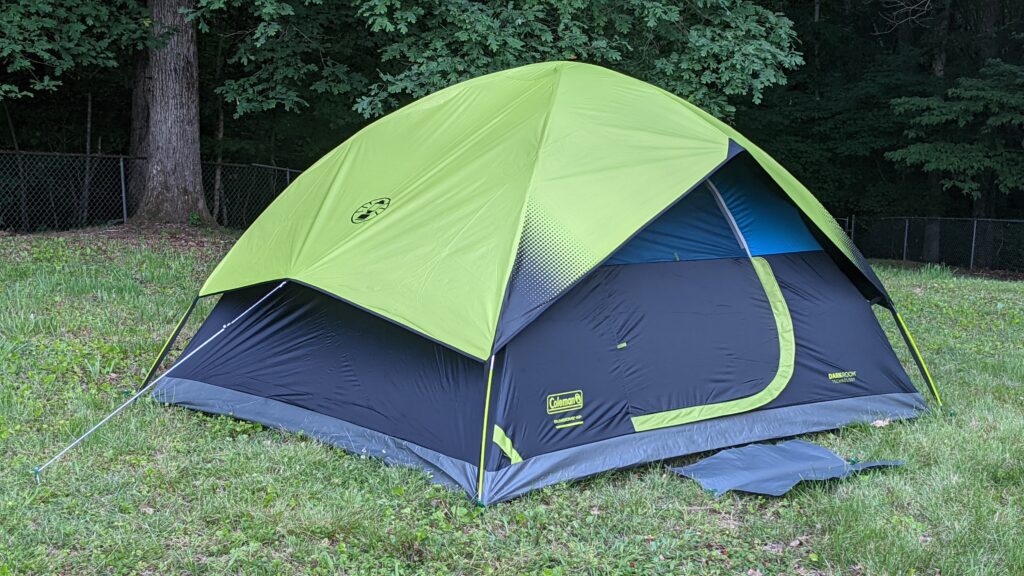
Featuring Dark Room Technology, it blocks 90% of sunlight, allowing for a restful sleep even after sunrise. The tent is weatherproof with welded corners, inverted seams, and an included rainfly for extra protection. Its strong frame withstands winds over 35 mph. Easy to set up within 10 minutes, it measures 9 x 7 ft with a 4 ft. 11 in. center height, fitting a queen-size air bed. Ideal for camping and hiking, it promises a cool, dark, and comfortable outdoor experience.
Sleeping Gear:
Sleeping bag :
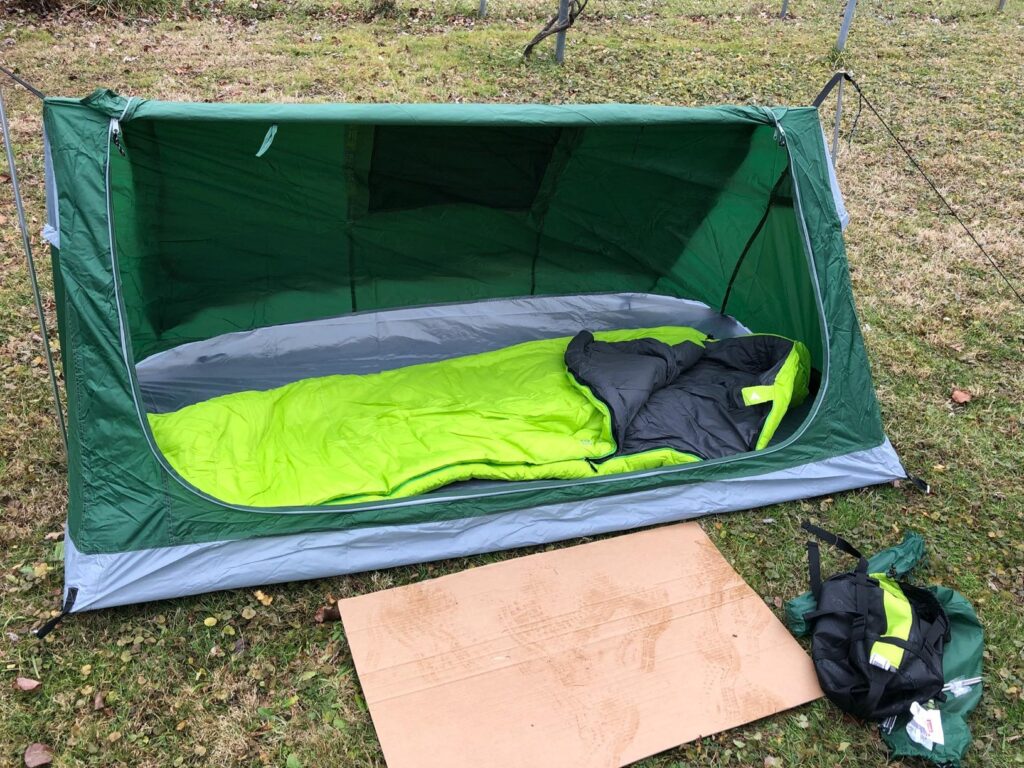
A comfortable sleeping bag like The TETON Sports LEEF Ultralight Mummy Sleeping Bag is an ideal choice for backpackers seeking comfort in various climates. Available in multiple temperature ratings (0°F, 20°F, 30°F), it caters to different camping styles. This mummy-shaped bag is designed for adult use and is made from durable polyester with microfiber fill. Measuring 81″L x 30″W, it offers ample space and comes in cool colors, blending traditional and stylish designs. It’s a perfect blend of functionality and style for camping and hiking enthusiasts,
Sleeping pad :
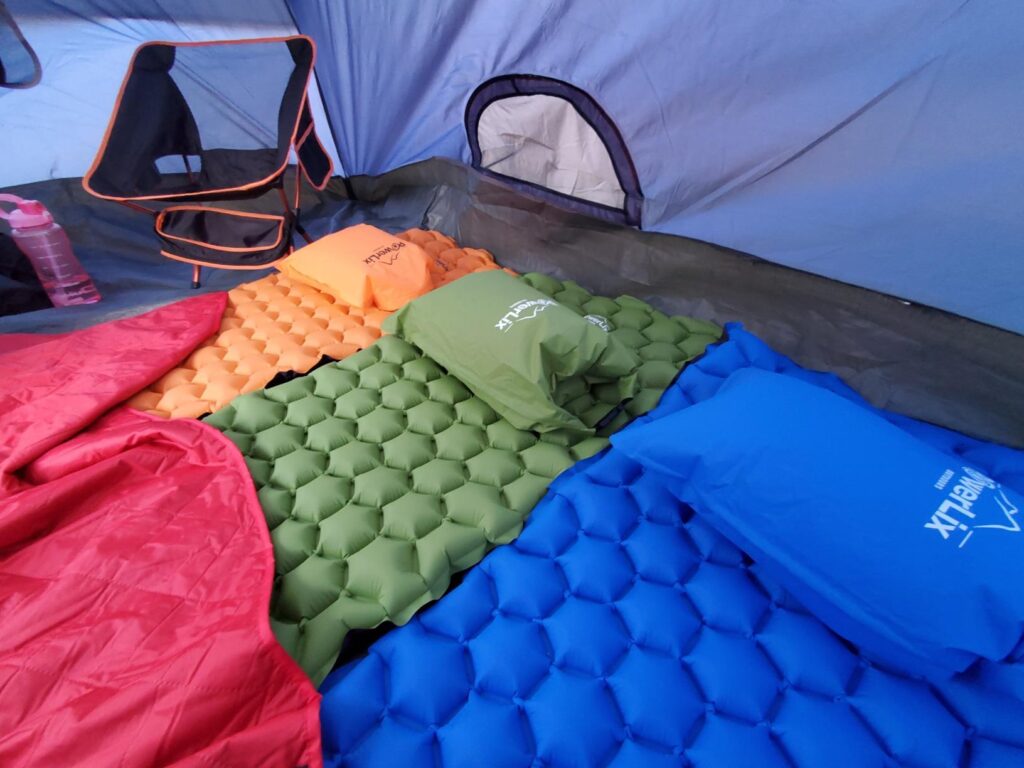
The POWERLIX Ultralight Sleeping Pad is a camping essential, designed for comfort and convenience in outdoor settings. This lightweight, inflatable pad, measuring 77.2″ x 22.8″ x 2.1″ when inflated, is crafted from durable 40D Nylon TPU, ensuring robustness and water resistance. It features a unique hexagon design with body-mapping technology for ergonomic support, making it ideal for all sleeping positions. The pad includes a multipurpose inflating bag, repair kits, and a storage bag, making it versatile for various outdoor activities. It’s perfect for camping, hiking, and backpacking, offering a comfortable sleep solution in any weather.
Water :
Adequate storage is vital for hydration, cooking, and cleaning like :
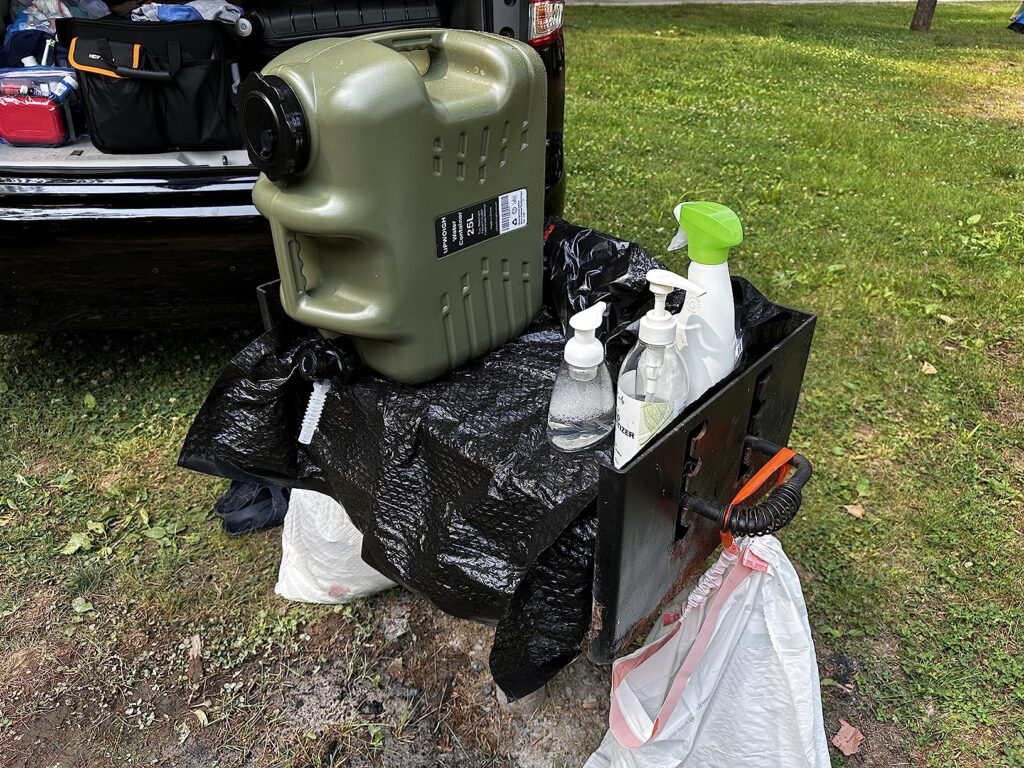
The UPWOIGH Camping Water Container is a practical and durable solution for outdoor hydration needs. This 2.6-gallon container, available in Military Green, is made from high-quality, food-grade, environmentally friendly HDPE plastic, ensuring it’s non-toxic and robust. It’s designed to be leak-proof, making it safe to store alongside other items without the worry of water damage.
Or the water purifaction tablets like discuss in our Article.
Fire Starter, Pocket Multitools & Knife :
Fire Starter :
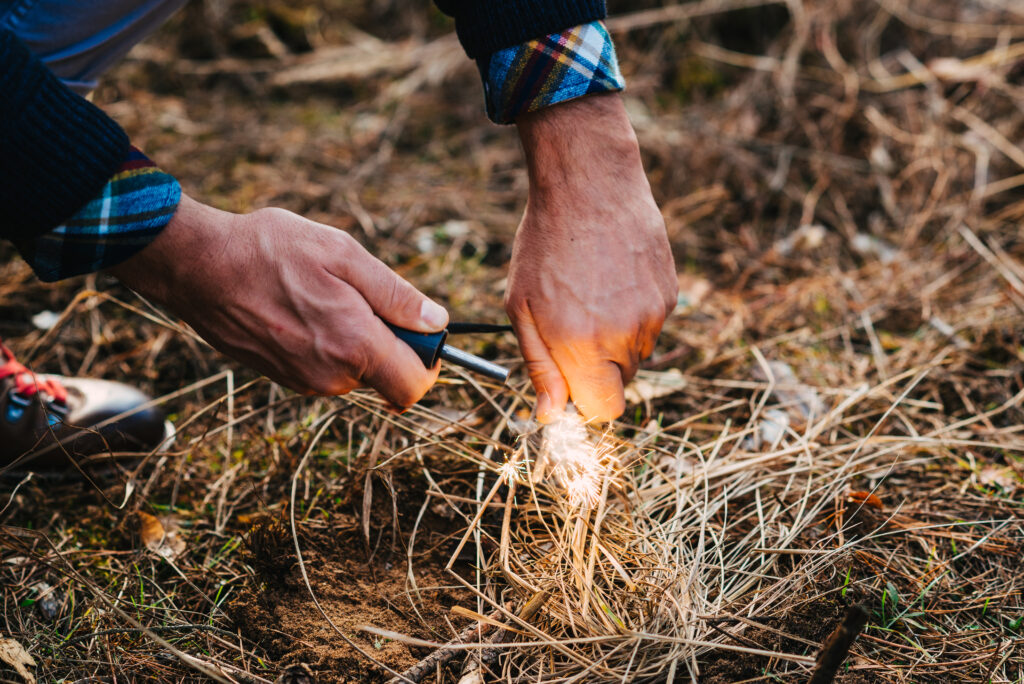
In the Fire Starter Kit, I personally recommend using a Fire Rod. It’s beneficial to become familiar with it through your experiences, as discussed in our previous post.
Pocket Multitools :
For multitools, if you’re seeking the best available in the market, I recommend Leatherman multitools. They are renowned for their reliability in the field. You can find brief details about them in this post, helping you choose the one that best suits your needs. If you’re in search of a reliable yet affordable option, I recommend you SOG multitools :

The SOG Multitool Pliers Pocket Knife – PowerPint EDC Tool is a compact and lightweight multi-tool, perfect for everyday carry. It features 18 different tools in one, making it a versatile and essential item for various tasks. This multi-purpose tool is designed for efficiency and convenience, fitting easily into a pocket or bag.
Knife :
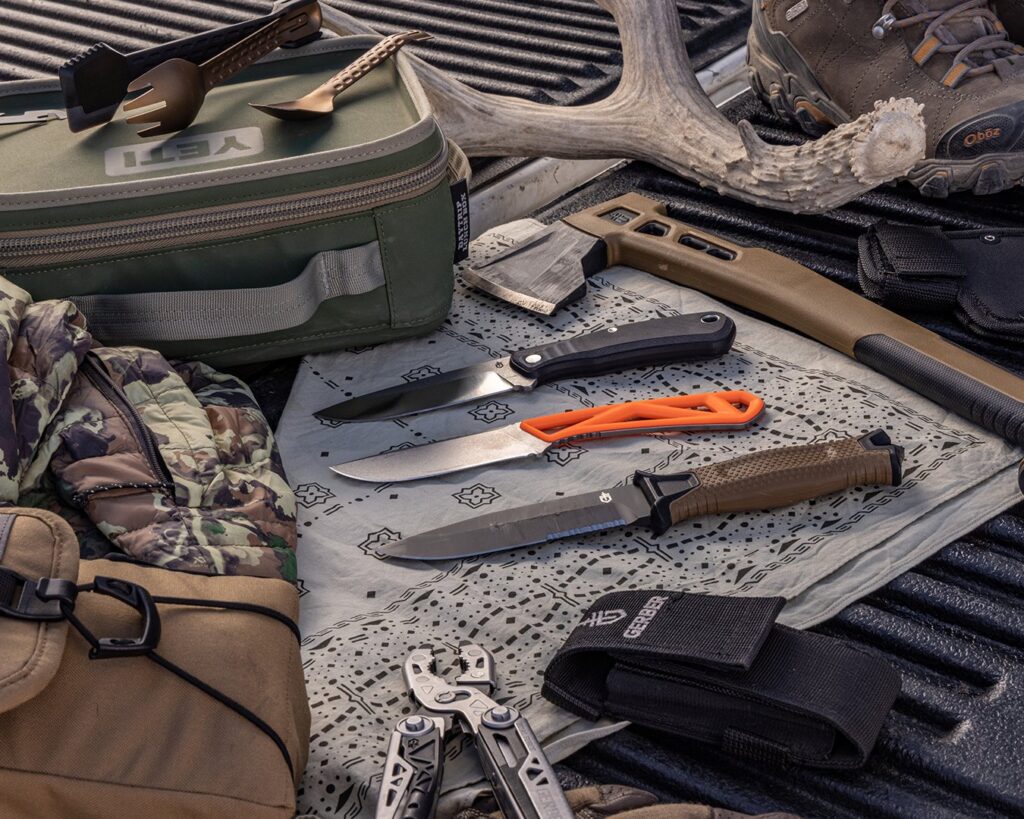
Regarding knives, we have previously discussed them over three posts, covering a range from high-quality brands like SOG and Gerber, which are used in military operations, to the most affordable yet good quality options available globally.
Cooking Gear:
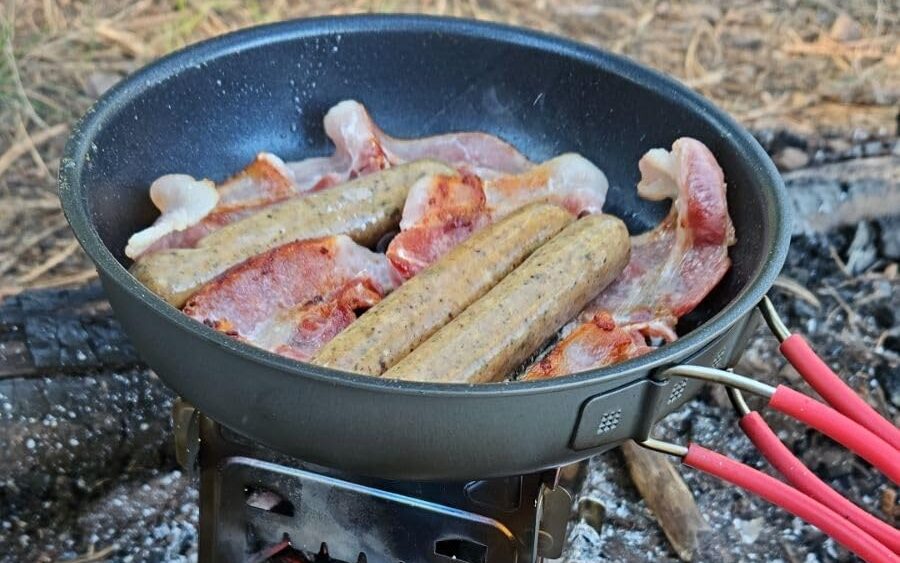
Compact and efficient cooking gear is necessary like The Alocs Camping Cookware Set is a comprehensive and durable solution for outdoor cooking. Made from hard alumina and food-grade silicone, this set is healthy, eco-friendly, and resistant to high temperatures, scratches, and oxidation. It includes a 2.2L pot, 1.2L pot, 1L pot, and a 7.5″ non-stick aluminum pan, all designed to be lightweight and portable. The set’s heat-resistant and folding handles ensure safety and convenience.
Backpack:
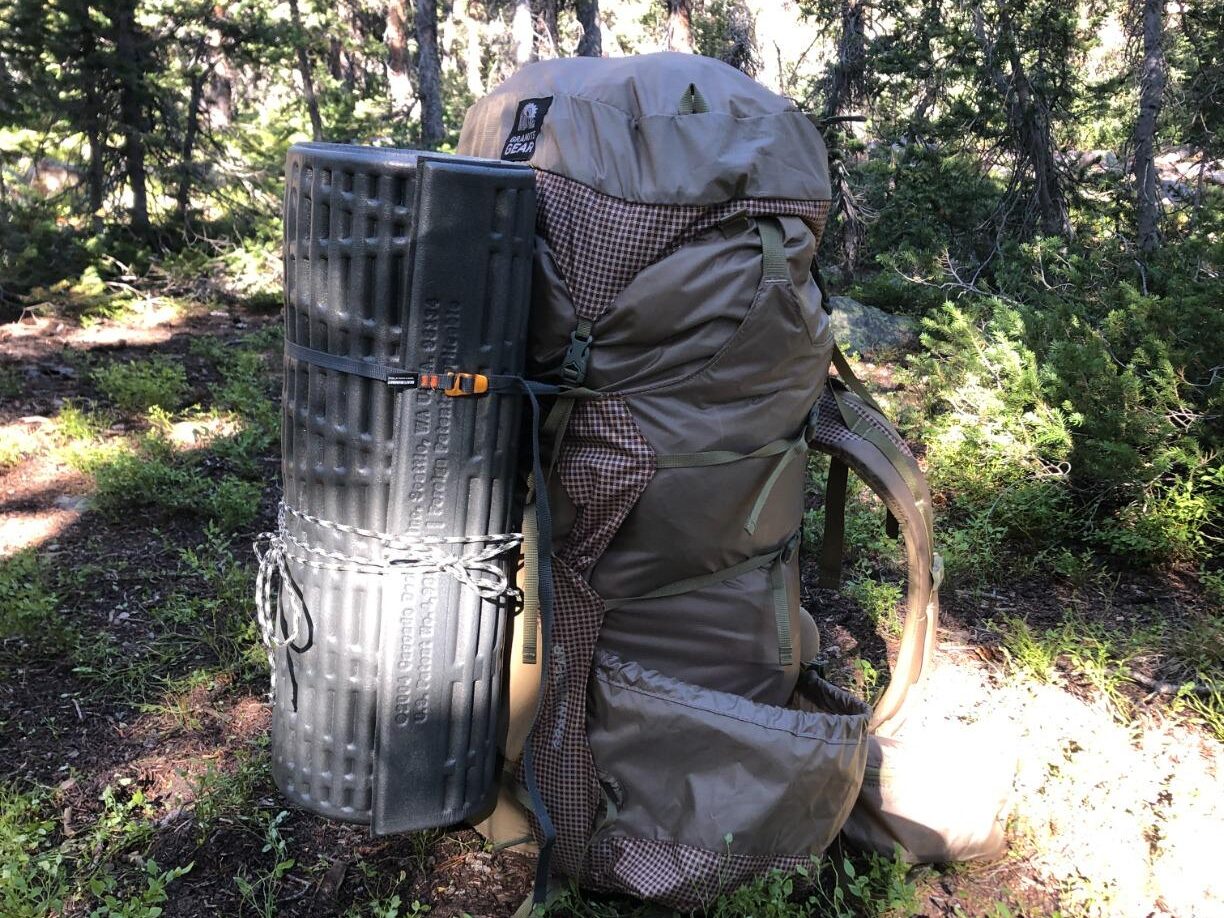
A sturdy backpack for carrying essentials, Like The Granite Gear Blaze 60L Backpack is a high-performance, durable backpack designed for serious hikers and backpackers. It features the new A.C. (Air Current) Frame, capable of supporting a 50lb load, ensuring stability and comfort even under heavy loads. The backpack is equipped with dual-density shoulder harnesses, load-lifter straps, a removable sternum strap with a whistle buckle for safety, and large hip belt pockets. It also includes a cinch-and-roll closure with crossing webbing straps to secure contents, a removable lid compartment with a DWR-treated zipper, and a hydration port with an internal sleeve. Made from robust materials like 210D Robic nylon UHMWPE triple ripstop, it’s designed for durability and longevity.
IFAK :
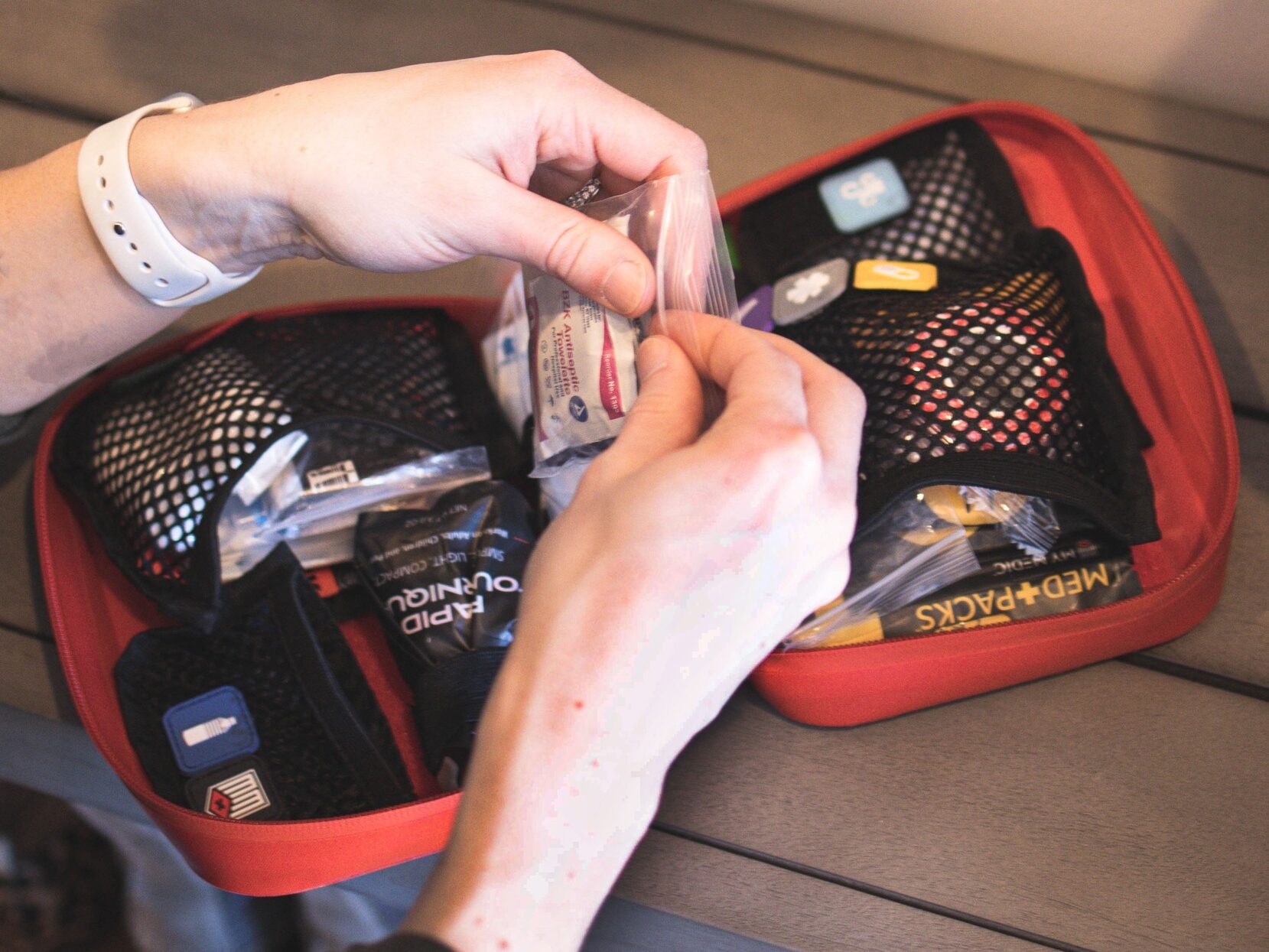
Regarding IFAKs, we have already discussed more than 10 options in this post, which you may find useful to check out.
Choosing the Right Location
Tips from the Reddit Stealth Camping community and SectionHiker.com emphasize:
- Legal Considerations: Always be aware of local laws regarding camping. Avoid areas with apparent ‘No Trespassing’ signs or recent human activity like tree harvesting.
- Safety and Discretion: Choose locations that are discreet and have a minimal environmental impact. Avoid areas known for wildlife activity or heavy human traffic.
- Water Proximity: Camp safely from water sources to avoid disturbing wildlife and reduce the risk of contamination.
- Leave No Trace: Follow Leave No Trace principles to minimize environmental impact.
Camouflage and Concealment
Techniques for remaining undetected, as discussed in the advnture.com article, include:
- Color of Shelter: Use a shelter that blends in with the surroundings. Avoid bright colors.
- Low Light Usage: Avoid using bright, unshielded lights that can draw attention.
- Noise Discipline: Keep noise levels low to avoid attracting attention.
- Timing: Arrive late and leave early from your camping spot to minimize the chances of being noticed.
Successful stealth camping requires the right gear, careful selection of camping spots, and techniques to remain inconspicuous. Always prioritize safety, legality, and environmental responsibility in your camping practices.
Stealth Camping in Urban and Wilderness Settings
Stealth camping requires different strategies and preparations, whether in urban or wilderness settings. Here’s a comprehensive guide based on insights from various sources:
Urban Stealth Camping
Urban stealth camping involves staying overnight in a city or town in a way that goes unnoticed. This can be challenging due to parking restrictions and safety concerns.
1. Vehicle Choice and Preparation (Beyond the Bucketlist):
- Choose a vehicle that blends in, like a Sprinter, Ford Transit, or conversion van.
- Opt for fewer windows for privacy.
- Use blackout curtains to prevent light from showing outside.
- Consider decoys like a construction hat or clipboard to make your van look like a work vehicle.
- Have a plan for bathroom needs, like a portable toilet or pee bottle.
2. Parking Strategies (Jackery):
- Park with the windowless side facing the street.
- Arrive after dark and leave early to minimize the chance of being noticed.
- Look for signs of street cleaning for legal parking opportunities.
- Choose well-lit areas for safety.
- Change your parking location nightly to avoid drawing attention.
3. Safety and Legal Considerations:
- Always be aware of local laws regarding overnight parking.
- Avoid parking in areas with “No Overnight Parking” signs.
- Stay alert to your surroundings and move if you feel unsafe.
Wilderness Stealth Camping
Wilderness stealth camping involves staying in remote, often undeveloped areas. It requires a different set of skills and considerations.
1. Vehicle and Gear (Lippert Europe):
- Use a camper van or motorhome that can handle off-road conditions.
- Equip your vehicle with essentials like solar panels for power and blackout curtains for privacy.
- Pack gear for self-sufficiency, including water storage, cooking equipment, and a first-aid kit.
2. Location Selection (Tom’s Bike Trip):
- Choose spots away from popular trails or campsites to minimize impact and increase privacy.
- Avoid areas with signs of wildlife activity, like bear scat or berry patches.
- Camp safely from water sources to protect wildlife and reduce disturbance.
3. Leave No Trace Principles:
- Minimize your impact on the environment by packing out all trash and waste.
- Avoid creating new campsites; use existing ones where possible.
- Be mindful of fire safety and local regulations regarding campfires.
4. Safety and Legal Aspects:
- Research the legality of camping in your chosen area, especially on public lands like national forests.
- Be prepared for wildlife encounters and know how to store food safely.
- Always inform someone of your camping plans and expected return for safety.
In summary, stealth camping in urban areas requires blending in and respecting local laws, while wilderness stealth camping focuses on minimizing environmental impact and ensuring safety in remote locations. Both require careful planning and respect for the surroundings.
Safety and Etiquette
Safety Measures in Stealth Camping
When engaging in stealth camping, safety is paramount. According to the EcoFlow blog, several precautions should be taken to ensure a safe experience:
- Location Awareness: Be aware of your surroundings and choose locations wisely. Avoid camping in areas with high crime rates or where stealth camping is prohibited.
- Low Profile: Keep a low profile in urban settings to avoid drawing attention. This includes minimizing noise and light and avoiding conspicuous activities.
- Legal Considerations: Understand the local laws and regulations regarding stealth camping. Many cities have specific ordinances against it, so being informed is crucial.
- Power Management: Managing power needs is essential for those using RVs or vans. Using portable power stations like EcoFlow RIVER 2 can provide a discreet power source without the noise and emissions of traditional generators.
- Emergency Preparedness: Always be prepared for emergencies. This includes having a first-aid kit, sufficient food and water, and a plan for unexpected situations.
Leave No Trace Principles
Leaving no trace is crucial in stealth camping, as highlighted in the advnture.com article. This ethos ensures that the natural environment is preserved and minimizes the impact of camping activities. Key principles include:
- Waste disposal: All waste should be properly disposed of or packed out. This includes organic waste like food scraps and all trash and litter.
- Respect for Wildlife: Avoid disturbing wildlife and their habitats. This means keeping a safe distance and not feeding animals.
- Minimizing Campfire Impact: Using existing fire rings and keeping fires small if fires are permitted. Always ensure that fires are completely extinguished before leaving.
- Campsite Selection: Use existing campsites where possible. When this isn’t an option, choose a site not damaged by your presence.
- Consideration for Others: Respect other visitors and locals. This includes keeping noise levels down and maintaining a low profile.
In summary, safety in stealth camping involves being aware of your surroundings, respecting local laws, managing resources wisely, and being prepared for emergencies. Adhering to Leave No Trace principles ensures that the natural environment is respected and preserved for future enjoyment.
FAQ
What is Stealth Camping?
Stealth camping involves discreetly camping in areas not designated for overnight stays, often in urban or populated environments. It’s characterized by a low-profile presence to avoid detection, typically done in a camper van or tent. The goal is to sleep undetected and leave no trace, often in response to a lack of official campsites or for the adventure of blending into one’s surroundings.
Difference Between Stealth Camping and Wild Camping
Stealth camping and wild camping differ in location and intent. Stealth camping is discreetly camping in non-camping areas, often urban, to avoid detection. It’s about blending in, usually due to necessity or challenge. Wild camping, on the other hand, is legally camping in remote wilderness areas, away from established campsites. It focuses on experiencing nature directly, often in locations where camping is permitted but with minimal facilities.
Difference Between Boondocking and Stealth Camping
Boondocking refers to camping in remote, undeveloped areas without amenities, typically in an RV or camper. It’s often legal and done in rural or wilderness locations, focusing on self-sufficiency and enjoying nature. Stealth camping, however, involves discreetly camping in areas not meant for camping, often urban, to remain undetected. It’s more about necessity or challenge, requiring a low-profile approach to avoid drawing attention.
Is Stealth Camping Just Trespassing?
Stealth camping isn’t necessarily trespassing but can border on legal gray areas. It involves camping discreetly in places not designated for camping, often to avoid detection. While it’s not always illegal, it depends on local laws and land ownership. Trespassing involves knowingly entering private property without permission, which can be unlawful. Stealth campers often aim to respect property and privacy, choosing locations where camping isn’t explicitly forbidden.
In the End :
In this exploration of stealth camping, we’ve delved into its definition, distinguishing it from wild camping and boondocking, and addressed the legal nuances that separate it from trespassing. Stealth camping is a unique way to blend into urban or natural environments, offering an adventurous alternative to traditional camping.
We encourage you to apply these insights on your next outdoor adventure and share your experiences with the stealth camping community. Your stories can inspire and guide fellow enthusiasts.
Remember, stealth camping isn’t just about finding a place to sleep; it’s about embracing the challenge of harmoniously coexisting with our surroundings. It’s a journey that teaches respect for nature and urban landscapes, offering a deeper connection to the world we explore. Embrace the adventure, respect the environment, and enjoy the unique experiences that stealth camping brings.

